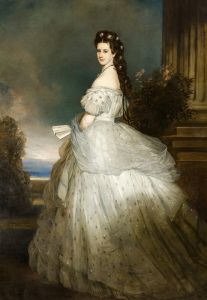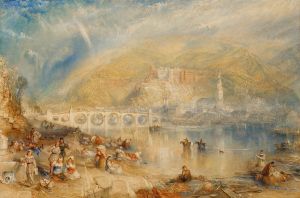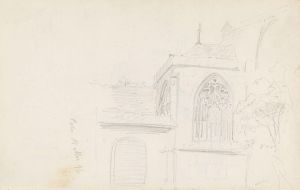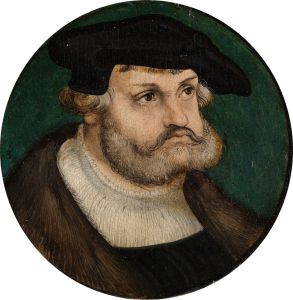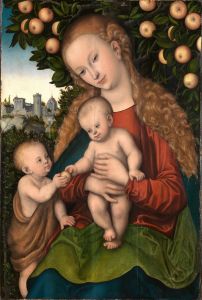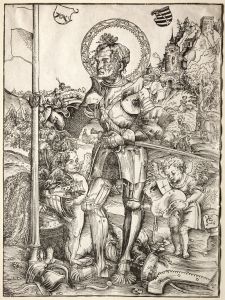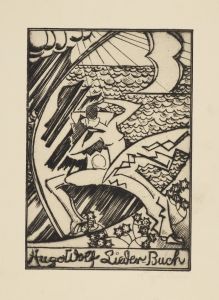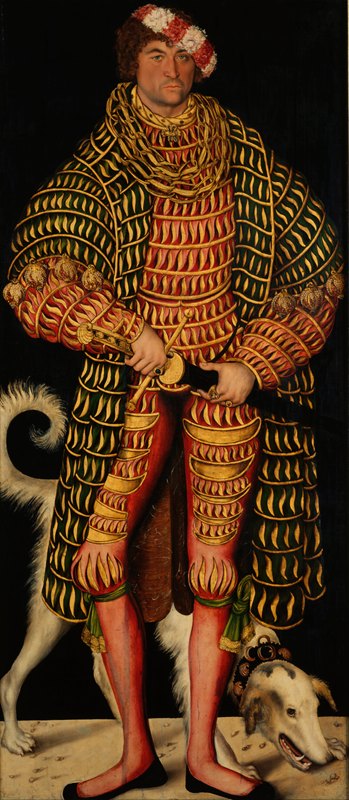
Duke Henry the Pious
A hand-painted replica of Lucas Cranach the Elder’s masterpiece Duke Henry the Pious, meticulously crafted by professional artists to capture the true essence of the original. Each piece is created with museum-quality canvas and rare mineral pigments, carefully painted by experienced artists with delicate brushstrokes and rich, layered colors to perfectly recreate the texture of the original artwork. Unlike machine-printed reproductions, this hand-painted version brings the painting to life, infused with the artist’s emotions and skill in every stroke. Whether for personal collection or home decoration, it instantly elevates the artistic atmosphere of any space.
Lucas Cranach the Elder, a prominent German Renaissance painter, created the portrait "Duke Henry the Pious" around 1514. This artwork is a significant representation of Cranach's skill in portraiture and his ability to capture the essence of his subjects. Duke Henry the Pious, also known as Heinrich der Fromme, was a notable figure in the early 16th century, serving as Duke of Saxony. He was born on March 16, 1473, and was a member of the House of Wettin, a dynasty that played a crucial role in the political landscape of the Holy Roman Empire.
The portrait of Duke Henry the Pious is a testament to Cranach's mastery in depicting the nobility of his time. Cranach was known for his detailed and realistic portrayal of his subjects, often highlighting their status and personality through meticulous attention to clothing, facial expressions, and posture. In this painting, Duke Henry is depicted with a calm and composed demeanor, reflecting his reputation as a pious and devout ruler. The portrait captures the duke in a three-quarter view, a common style in Renaissance portraiture that allows for a more dynamic representation of the subject.
Cranach's use of color and texture in the painting is noteworthy. The rich fabrics and intricate details of Duke Henry's attire are rendered with precision, showcasing the wealth and status of the duke. The background of the portrait is typically subdued, drawing attention to the subject and emphasizing his importance. This focus on the individual was a hallmark of Renaissance art, which sought to celebrate humanism and the distinct characteristics of each person.
Duke Henry the Pious was known for his strong religious convictions, which played a significant role in his governance. He was a supporter of the Protestant Reformation and worked towards implementing religious reforms in his territories. His piety and dedication to his faith are subtly reflected in the portrait through his serene expression and dignified pose.
Lucas Cranach the Elder was a contemporary and close associate of Martin Luther, the seminal figure of the Protestant Reformation. Cranach's connection to the Reformation and his role as a court painter for the Electors of Saxony positioned him as a key artist during a transformative period in European history. His portraits, including that of Duke Henry the Pious, not only served as personal and political statements but also as historical documents that provide insight into the era's cultural and religious shifts.
The painting of Duke Henry the Pious is housed in various collections, with several versions and copies attributed to Cranach and his workshop. This practice was common at the time, as artists often produced multiple versions of popular works for different patrons. The enduring appeal of Cranach's portraits lies in their ability to convey the individuality and status of their subjects while also reflecting the broader historical and cultural context of the Renaissance.
In summary, "Duke Henry the Pious" by Lucas Cranach the Elder is a distinguished example of Renaissance portraiture, capturing the essence of a significant historical figure with skill and sensitivity. The painting not only highlights Cranach's artistic talents but also serves as a window into the religious and political dynamics of 16th-century Saxony.





